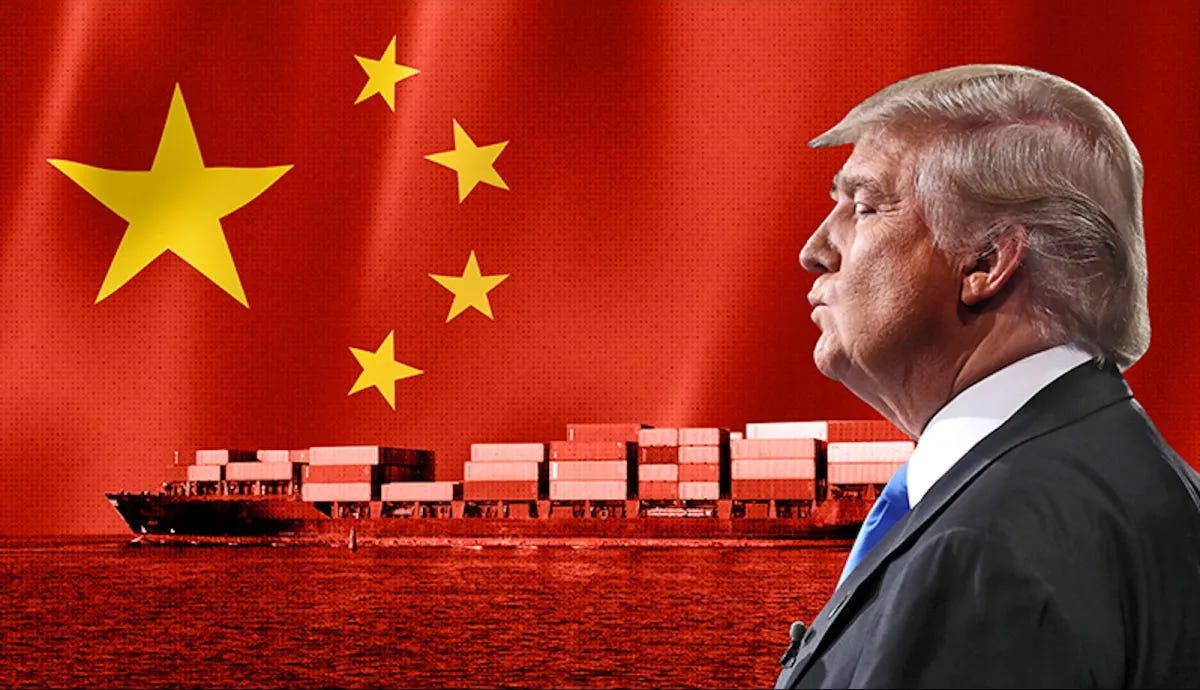Trump’s Economic Reality Check
Trump’s second term faces an undeniable truth, China’s manufacturing dominance is unshakable, and America must find a new economic strategy.
As Donald Trump embarks on his second term as President in 2025, a significant shift in economic rhetoric is emerging. Despite years of strong advocacy for reshoring American manufacturing and reducing dependency on China, recent economic trends suggest that Trump, perhaps grudgingly, has come to terms with a daunting reality: the United States cannot outcompete China in traditional industrial production.
The Chinese economy, with its sheer scale, robust industrial policies, and vast labor force, has entrenched itself as the world’s dominant manufacturer. Any attempts to reclaim America’s former status as an industrial powerhouse are proving to be an uphill battle, one that even Trump’s aggressive trade strategies cannot easily overcome.
Trump’s Reindustrialization Vision: A Struggle Against Reality
Since his first term, Trump has championed the idea of revitalizing American manufacturing, emphasizing policies such as imposing tariffs on Chinese goods, renegotiating trade agreements, and incentivizing domestic production. His administration made efforts to encourage companies to bring their factories back to the U.S., presenting China as both an economic and geopolitical adversary.
However, despite these efforts, China’s industrial superiority remains unshaken. While tariffs briefly curbed imports, they also increased costs for American businesses reliant on Chinese components. Many corporations opted to absorb these costs or seek alternative production hubs rather than shift operations back to the U.S.
The results have been mixed. While certain industries—like semiconductor production—received boosts through government-backed incentives such as the CHIPS Act, large-scale reindustrialization has failed to materialize. Trump’s second term now faces the same fundamental challenges: how can America bring back manufacturing when China’s economic model is vastly more efficient?
China’s Overwhelming Advantages in Manufacturing
China’s manufacturing sector holds several key advantages that make it nearly impossible for the U.S. to compete on a broad scale.
Unmatched Labor Force – With a workforce exceeding 700 million people, China has a labor pool that dwarfs the U.S., allowing it to sustain mass production at lower costs. Even with wage increases, China remains the global leader in high-output, low-cost manufacturing.
Government Industrial Strategy – The Chinese government heavily subsidizes key industries, ensuring that domestic manufacturers maintain an edge over foreign competitors. According to reports, China allocates nearly 5% of its national income to industrial support, a level of economic planning far beyond what Western economies practice.
Fully Integrated Supply Chains – Over decades, China has built a seamless manufacturing ecosystem, making it the go-to hub for everything from consumer electronics to industrial machinery. Unlike the U.S., which faces logistical challenges and fractured supply networks, China has a well-oiled system that allows products to be designed, built, and shipped rapidly.
Why the U.S. Cannot Catch Up
Despite attempts to reignite domestic industry, several systemic issues continue to plague the U.S.:
Labor Shortages – The American workforce lacks the necessary volume and training to support a full-scale industrial resurgence. The U.S. manufacturing sector is already struggling with an aging workforce, and projections suggest that by 2029, nearly half of the current industrial workforce will need to be replaced due to retirements.
High Costs of Production – American wages, regulations, and infrastructure expenses make domestic manufacturing significantly more expensive than outsourcing to China or other low-cost economies.
Supply Chain Dependencies – Despite efforts to decouple, the U.S. remains reliant on Chinese imports for essential materials. The manufacturing sector, particularly in electronics and renewable energy, is still deeply tied to Chinese supply chains.
Delays in Industrial Investments – While initiatives like the CHIPS Act aimed to boost domestic production, nearly 40% of announced large-scale manufacturing projects have stalled or been delayed due to economic concerns. (Financial Times)
A Cooling of the “Bring Jobs Back” Rhetoric?
While Trump continues to frame China as a major economic adversary, his second-term policies may reflect a more pragmatic stance. The failure to bring back large-scale manufacturing in his first term, combined with China’s continued dominance, suggests that a full-blown trade war is unsustainable.
Instead, the administration may pivot towards strategic competition rather than outright confrontation. This could mean focusing on:
High-tech and advanced industries – Rather than competing in mass production, the U.S. may double down on sectors like artificial intelligence, biotechnology, and semiconductors.
Global economic alliances – Strengthening trade ties with allied nations to counterbalance China’s influence.
Workforce development – Investing in specialized training programs to equip American workers for high-tech industries rather than attempting to revive low-skill manufacturing jobs.
Economic Reality: The Decline of American Manufacturing
The broader economic landscape reflects the difficulty of reversing America’s industrial decline.
Despite continued economic growth, many Americans feel financially strained due to inflation, high costs of living, and slow wage growth. A recent survey found that over 60% of Americans believe the country is in a recession, even though GDP figures indicate otherwise.
Meanwhile, the U.S. trade deficit with China remains substantial, highlighting how deeply intertwined the two economies remain despite Trump’s policies. The U.S. still imports billions in Chinese goods annually, ranging from electronics to pharmaceuticals, reinforcing the challenge of economic decoupling.
Conclusion: A Shift in Strategy?
Trump’s second term is unfolding against the backdrop of a changing economic reality. The dream of American reindustrialization is clashing with the hard truths of global economic dynamics. China’s manufacturing empire remains unchallenged, and the U.S. will likely need to redefine its economic strategy rather than attempt to recreate the past.
The focus may now shift from competing with China in traditional manufacturing to outpacing it in innovation and high-tech industries. If Trump has indeed realized this reality, his second term may be less about tariff battles and more about securing America’s economic future through technological leadership and strategic alliances.
The question remains: will the U.S. accept its industrial decline, or will it find a new path to maintain economic supremacy?



